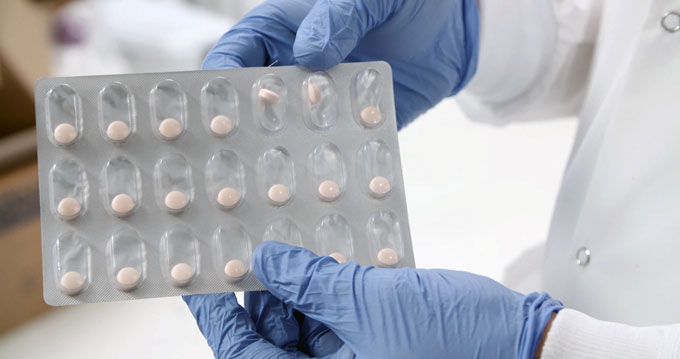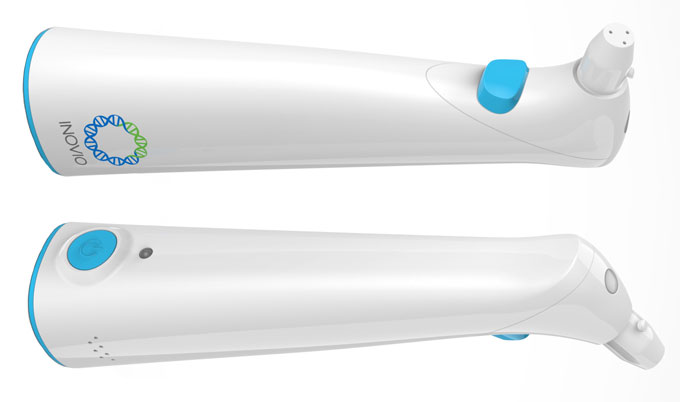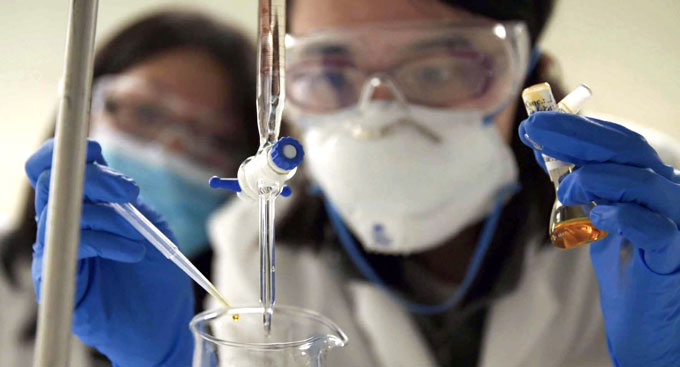This post was originally published on this site
Barely a year after the World Health Organization declared the coronavirus outbreak a pandemic, 11 vaccines worldwide have been granted emergency use authorization or given full approval. Millions of shots are going into arms every day: As of March 19, 410 million people around the world have gotten the jabs.
As mind-boggling as that is, it still falls far short of the need.
Those 11 vaccines “will not be enough to fulfill the global need in the short term,” says Esther Krofah, executive director of FasterCures, part of the Milken Institute think tank in Washington, D.C. Of the more than 7 billion people on Earth, only about 1.2 percent of the world’s population is now fully vaccinated against the coronavirus. “We need as many vaccines over the finish line as can get through the scientific process,” she says.
Help may be on the way. Another 251 COVID-19 vaccines are at some stage of development with 60 far enough along to be tested in people, says Carly Gasca, senior associate at FasterCures.
Some vaccines are close to the finish line. For example, one made by Novavax of Gaithersburg, Md., may soon request emergency use authorization in the United States and other countries. But vaccines in the pipeline can fail at any stage. Already at least four vaccine candidates have been abandoned, including two from pharmaceutical giant Merck that failed to generate immune responses as strong as those from natural infections. That company is now helping produce Johnson & Johnson’s one-dose vaccine (SN: 2/27/21).
Among the hurdles: The already-in-use vaccines have set a high bar. For instance, mRNA vaccines from Moderna and Pfizer have proven to have about 94 to 95 percent efficacy in clinical trials and in real-world situations and may protect against infection and disease after just one shot (SN: 2/26/21). And finding people willing to participate in gold-standard clinical trials in which they might get a placebo instead of a vaccine could be tough, especially in countries where other authorized vaccines are available.
“You have to have something super über-duper special about your product to survive in this environment,” says Onyema Ogbuagu, a virologist who heads COVID-19 clinical trials at Yale School of Medicine.
That edge could come from logistics. To be effective, vaccines have to get into people’s bodies. So unlike the Pfizer and Moderna shots, vaccines that don’t have to be frozen have a better chance of being used in rural or remote areas and places that don’t have resources to buy and maintain freezers, Gasca says.
Or an edge could come from an ability to handle emerging variants of the coronavirus that may be more infectious, more deadly or both (SN: 2/5/21). “The variants emerging are changing the landscape of the kind of virus we’re fighting now versus the virus that we were fighting in the fall and in the summer,” Krofah says. New vaccines may need to combat even more variants.
Here’s a closer look at some of the novel ways vaccine makers are approaching these challenges.
COVAXX
How it works: COVAXX designed small pieces of protein, called peptides, from several of the proteins from SARS-CoV-2, the coronavirus that causes COVID-19. Peptides mimic important structures within the coronavirus proteins, including a part of the spike protein used to break into cells. When injected into the body, the lab-made peptides prod the immune system to build antibodies and gear up other immune cells to attack the coronavirus should the vaccinated person encounter it later. (The Dallas-based company is not connected to the similarly named World Health Organization’s COVAX program that distributes vaccines to low-income countries.)
How it’s different: While other vaccines, including Novavax’s candidate, use the entire spike protein, COVAXX has homed in on portions of coronavirus proteins that are important for function and are likely to provoke a reaction from the immune system. The vaccine is stable at refrigerator temperature.
Clinical trial status: The company completed Phase I testing for safety and the ability to rev up the immune system in 60 adults. All of the volunteers made antibodies and had immune cells known as T cells and B cells trained to recognize the coronavirus in the event of future encounters. Participants had only mild side effects, with few people reporting symptoms such as fever and fatigue.

COVAXX is doing Phase II testing in Taiwan to learn more about the immune response and side effects. Phase II and III testing will begin soon in Brazil to determine the vaccine’s efficacy.
Combating variants: The company is already working a second generation of the vaccine that could work against multiple variants, says COVAXX cofounder Mei Mei Hu.
Thoughts on being behind: “I never thought this was winner takes all,” Hu says. “The demand is still incredible, and even when it is met, there will continue to be unmet needs,” including vaccines that can tackle variants, vaccines that work well for people with suppressed immune systems, vaccines for children and vaccines that can mix and match with others in case booster shots are needed.
Vaxart
How it works: The San Francisco–based company engineered a common cold virus called an adenovirus to carry instructions for making two coronavirus proteins into human cells. There, the proteins can be made to prime the immune system to later fend off the coronavirus.
How it’s different: Vaxart’s vaccine is a pill: It can be swallowed instead of injected. The tablets can be stored at room temperature and don’t need trained medical workers or equipment to administer. That could make the pill ideal for sending booster doses through the mail or using in hard-to-reach places where keeping vaccines cold is difficult. And people who are afraid of needles might like a tablet alternative.
Taking the vaccine orally also may produce more of an immune response in the mucous membranes that line the nose, mouth, throat and digestive tract than injected vaccines do, says Sean Tucker, Vaxart’s founder and chief scientific officer.
Other vaccines already in use, including the Johnson & Johnson, AstraZeneca, Sputnik V and CanSino vaccines, also contain engineered adenoviruses. But those vaccines have instructions for making just one coronavirus protein, the famous spike protein. Vaxart’s vaccine contains instructions for making the spike protein, and also for the nucleocapsid, or N protein. The N protein is important for replication and assembly of the coronavirus. It provides another target for antibodies that can shut the virus down.

Clinical trial status: Because the vaccine works in airways and the digestive tract, it is difficult to directly compare with injected vaccines, Tucker says. But the vaccine appears to generate antibodies against both the spike and N proteins and revs up T cells to combat the virus, according to preliminary results from a small Phase I trial to test safety and immune responses. Full results are expected soon.
Side effects were generally mild. Some who took a high dose experienced diarrhea and nausea. Those symptoms are not usually seen with injected vaccines. A lower dose of the tablet vaccine didn’t produce those symptoms.
The company will soon begin a Phase IIa study to determine the optimal dose of the vaccine, and Tucker says the team hopes to start an efficacy study later this year.
Combating variants: Even though the spike protein has undergone many changes, the N protein hasn’t altered much. The difference between the N proteins in the B.1.351 variant first described in South Africa and the original SARS-CoV-2 is just one amino acid. Hopefully that will mean antibodies and T cells against the N protein can neutralize variants as well as they do the original virus, Tucker says. Meanwhile, he says, “we are looking at new versions of the vaccines in research and will test preclinically [in animals or cells] to see if there are advantages to making new matched vaccines.”
Thoughts on being behind: The coronavirus may never go away entirely. If it behaves like coronaviruses that cause the common cold, people may get reinfected every two to five years. “I think our vaccine could be a great second-generation solution,” Tucker says. The pill vaccine might be an easy way to deliver boosters to people who have gotten other COVID-19 vaccines, he says.
Valneva
How it works: Valneva’s vaccine is an inactivated, or “killed,” version of SARS-CoV-2. The virus used in the vaccine was isolated from a patient in Italy. Then, Valneva’s scientists engineered it to lack a protein necessary for the virus to replicate. The vaccine virus has to be grown in monkey cells, which have been engineered to make the missing viral protein. Human cells don’t normally produce that protein, so the vaccine virus can’t replicate and cause disease, but can still stimulate immune responses.
Although inactivated vaccines have been used for decades, “our vaccine is not any less modern than any of the others,” says Thomas Lingelbach, the Saint-Herblain, France-based company’s president and chief executive officer.
How it’s different: Its engineering is different. Several inactivated COVID-19 vaccines, including ones made by the Chinese companies Sinopharm and Sinovac and by Bharat Biotech in India, are in use around the world. But those viruses are killed by dousing them in chemicals instead of engineering the virus the way Valneva has.
Clinical trial status: Results from a Phase I/II study are expected in April.
Combating variants: Because the vaccine contains the whole virus (minus one protein), variants that have tweaks in their spike protein may not be as big a problem for Valneva’s vaccines as for other vaccines. There are a lot of other parts of the virus for the immune system to recognize. The company is also working on creating versions of the vaccine based on strains circulating in people.
Thoughts on being behind: “We’re not entirely unhappy to be a bit slower,” Lingelbach says. The company may be able to build on other vaccines’ successes and learn from their failures. By comparing immune responses from its vaccine with already established vaccines, the company may be able to get hints of its vaccine’s efficacy early on in its development rather than having to wait for a Phase III trial. Regulators eventually may allow head-to-head comparisons of efficacy — as is commonly done with new flu vaccines — rather than testing each vaccine against a placebo.
INOVIO
How it works: DNA instructions for building the coronavirus spike protein are zapped into the skin with a split-second pulse of electricity. From there, cells in the body produce the spike protein and cue the immune defenses.
How it’s different: No other vaccine has this delivery method. Electrical pulses that push the DNA into cells are made by a handheld device that resembles an electric toothbrush. Some people report that the zap is less painful than a needle stick.
The vaccine may produce fewer side effects than some already in use. “We haven’t seen fatigue and fever and other systemic effects,” says Joseph Kim, INOVIO’s chief executive officer. Kim speculates it may be because the vaccine contains only DNA and saline, or because different types of cells may take up the DNA than are affected by injected vaccines. Only five of 40 people tested in a Phase I study reported any side effects, and all of those were mild, researchers reported December 23 in EClinicalMedicine.
Additionally, the vaccine can be stored for a year at room temperature and for five years in a refrigerator.

Clinical trial status: Results from the Phase I study indicate that people make antibodies against the coronavirus at higher levels, on average, than those given the Johnson & Johnson and Sinovac vaccines, which use adenoviruses to deliver DNA instructions for building the spike protein to human cells, Kim says. It’s unclear why. And while antibody levels were lower than those produced by the mRNA vaccines, the DNA vaccine does a good job of revving up T cells to fight the coronavirus.
INOVIO has started Phase II testing of its vaccine, with early results expected soon. A Phase III trial will start once the U.S. Food and Drug Administration clears a commercial version of the DNA delivery device to be used in the trial.
Combating variants: The company is testing whether antibodies made against the vaccine can still fight off the variants. In addition, INOVIO, headquartered in Plymouth Meeting, Pa., hopes to engineer a universal COVID vaccine that could fight off known and unknown versions of SARS-CoV-2.
Thoughts on being behind: The company isn’t worried about standing out against other vaccines, Kim says. “We have several advantages as a vaccine,” he says. “We are extremely motivated to get to our efficacy trial.… We’re working very eagerly and passionately to make sure that INO-4800 is one of the arsenals that global health will have to fight this infection around the world.
